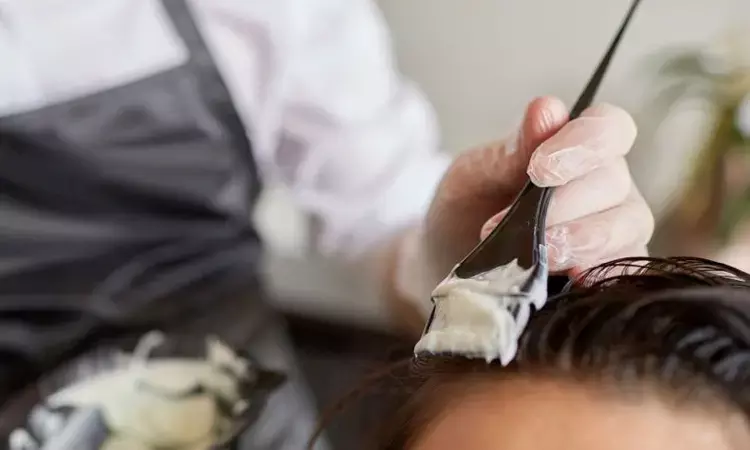- Home
- Medical news & Guidelines
- Anesthesiology
- Cardiology and CTVS
- Critical Care
- Dentistry
- Dermatology
- Diabetes and Endocrinology
- ENT
- Gastroenterology
- Medicine
- Nephrology
- Neurology
- Obstretics-Gynaecology
- Oncology
- Ophthalmology
- Orthopaedics
- Pediatrics-Neonatology
- Psychiatry
- Pulmonology
- Radiology
- Surgery
- Urology
- Laboratory Medicine
- Diet
- Nursing
- Paramedical
- Physiotherapy
- Health news
- Fact Check
- Bone Health Fact Check
- Brain Health Fact Check
- Cancer Related Fact Check
- Child Care Fact Check
- Dental and oral health fact check
- Diabetes and metabolic health fact check
- Diet and Nutrition Fact Check
- Eye and ENT Care Fact Check
- Fitness fact check
- Gut health fact check
- Heart health fact check
- Kidney health fact check
- Medical education fact check
- Men's health fact check
- Respiratory fact check
- Skin and hair care fact check
- Vaccine and Immunization fact check
- Women's health fact check
- AYUSH
- State News
- Andaman and Nicobar Islands
- Andhra Pradesh
- Arunachal Pradesh
- Assam
- Bihar
- Chandigarh
- Chattisgarh
- Dadra and Nagar Haveli
- Daman and Diu
- Delhi
- Goa
- Gujarat
- Haryana
- Himachal Pradesh
- Jammu & Kashmir
- Jharkhand
- Karnataka
- Kerala
- Ladakh
- Lakshadweep
- Madhya Pradesh
- Maharashtra
- Manipur
- Meghalaya
- Mizoram
- Nagaland
- Odisha
- Puducherry
- Punjab
- Rajasthan
- Sikkim
- Tamil Nadu
- Telangana
- Tripura
- Uttar Pradesh
- Uttrakhand
- West Bengal
- Medical Education
- Industry
Hair colouring safe with respect to cancer risk, finds BMJ study

Researchers have found in a new study that hair colouring is safe with respect to cancer risk.
Earlier studies have indicated that people who dye their hair regularly may have a higher risk of cancer, especially bladder cancer and breast cancer. Hair dyes contain certain chemicals that have been held responsible for these relationships. In the largest study to date, which followed 117,200 women from the USA over 36 years, this could not be confirmed.
A research team led by Eva Schernhammer, Head of the Department of Epidemiology at the Medical University of Vienna, showed in a specific analysis of the data from a cohort study of American nurses that regular hair colouring had no significant effect on most types of cancer - with a few exceptions. This study was published in the British Medical Journal.
The International Agency for Research on Cancer (IARC), part of the World Health Organization (WHO), has classified occupational exposure (e.g. hairdressers) to hair dyes as a probable human carcinogen, while personal use of hair dyes could not be classified. However, as current epidemiological evidence is far from conclusive, there is concern about the carcinogenic potential of personal use of permanent hair dye, especially those that are particularly aggressive and most commonly used.
Hardly an increased risk for most types of cancers - with exceptions
The current study - the largest prospective study on this topic to date - found no link between personal use of permanent hair dye and the risk of most cancers or cancer-related mortality.
However, it did find a positive association for the risk of basal cell carcinoma, hormone receptor-negative breast cancer (ER-, PR- and ER-/PR-), and ovarian cancer. Further, the study also found evidence for heterogeneity due to natural hair colour: an increased risk of Hodgkin's lymphoma was only observed in women with naturally dark hair, and a higher risk of basal cell carcinoma was especially observed in women with naturally light hair.
Eva Schernhammer: "The present prospective cohort study offers some reassurance against concerns that personal use of permanent hair dyes may be associated with an increased risk of cancer or mortality. Nevertheless, we also found a positive correlation for the risk of some cancers."
Current findings are limited to US white women and may not extend to other populations.
"Our results justify further prospective validation," explains Schernhammer. "This depends on different populations and countries, different susceptibility genotypes (e.g. NAT1 or NAT2), cancers if different genotypes and molecular genetic phenotypes, different exposure settings (personal use vs. occupational exposure), different time points and different colours of the permanent hair dyes used (dark dyed vs. light dyed), with refined exposure estimates and should be interpreted in the light of the totality of the evidence."
Hina Zahid Joined Medical Dialogue in 2017 with a passion to work as a Reporter. She coordinates with various national and international journals and association and covers all the stories related to Medical guidelines, Medical Journals, rare medical surgeries as well as all the updates in the medical field. Email: editorial@medicaldialogues.in. Contact no. 011-43720751
Dr Kamal Kant Kohli-MBBS, DTCD- a chest specialist with more than 30 years of practice and a flair for writing clinical articles, Dr Kamal Kant Kohli joined Medical Dialogues as a Chief Editor of Medical News. Besides writing articles, as an editor, he proofreads and verifies all the medical content published on Medical Dialogues including those coming from journals, studies,medical conferences,guidelines etc. Email: drkohli@medicaldialogues.in. Contact no. 011-43720751


